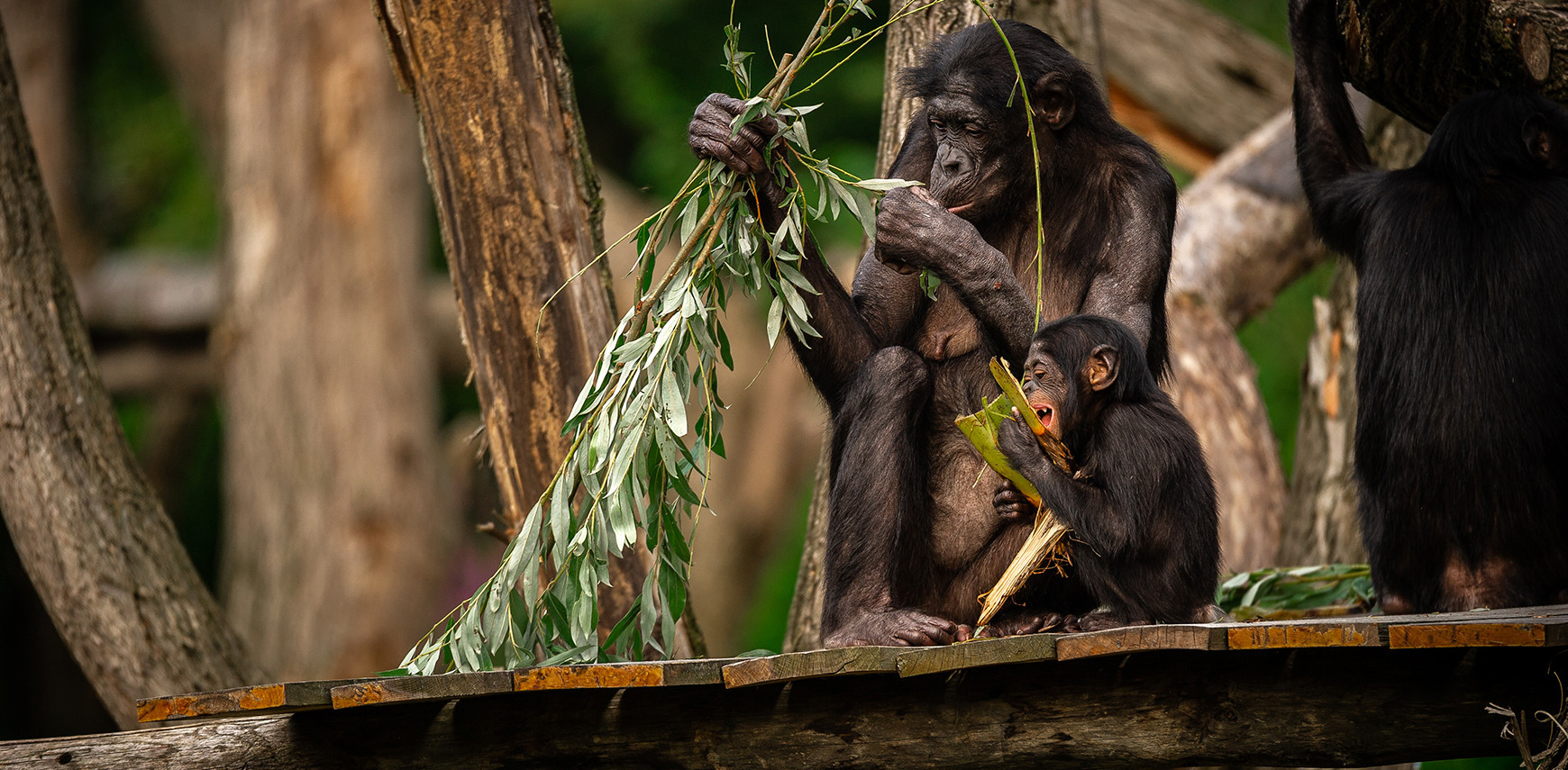A database full of intestinal bacteria from bonobos
Did you know that as many as 50% of the cells in your body are not human cells, but bacteria? The majority of them live in your gut, and together they form a complete ecosystem called the gut microbiome. These bacteria not only help you digest food, but also support your immune system and can even affect your mood.
And this is not only the case in humans: the intestines of other mammals are also teeming with bacteria. Because these bacteria play such an important role in the health of an animal, we wondered: where exactly do they come from, and how can certain lifestyles change this ecosystem? To investigate this, we dived into the intestinal life of the bonobo.
Shit..... a lot of shit!
How do you study gut bacteria without having to look inside the intestines themselves? Simple: via bonobo feces. The bacteria that end up in the stool give a good picture of what is going on in the intestines. And the big advantage: collecting feces can be done easily and without disturbing the animals.
We collected no fewer than 684 fresh fecal samples from 212 bonobos, both from groups in the wild in the Democratic Republic of Congo and from all bonobos living in European zoos. We also recorded data on their diet, health, medication and even their social behaviour. All this information together provided us with a unique database, a kind of library of bonobo intestinal flora.
The intestinal flora differs between bonobos in nature and the zoo
What struck us most? First of all, we found that the intestinal flora of bonobos in nature is much more diverse than that of their counterparts in zoos. In addition, bonobos also have a different composition of intestinal bacteria in nature. For example, they have much more of the bacterium Prevotella, which helps break down fibers. This is not surprising, because in nature bonobos eat many more leaves, branches, and fruit that is much higher in fiber content than is the case in the zoo.
Interestingly, we saw that bonobos in zoos that were fed more fiber-rich natural food develop an intestinal flora that was more similar to that of their counterparts in nature. It is clear: what you eat helps determine which bacteria will flourish in your intestines.
Bonobos share more than hugs
But not only food plays a role: social behaviour also influences the intestinal flora. Bonobos that had a lot of physical contact with each other were found to have stronger similarities in their gut microbiome than with bonobos that also lived in the same group, but with whom they did not often come into contact. Gut bacteria therefore seem to be literally transferred from bonobo to bonobo by touching each other.
In addition, we saw that mothers pass on their bacteria to their children. Even adult bonobos that had long since ceased to live with their mothers still bore clear traces of her gut flora. It seems that your bacterial inheritance is passed on from an early age and can travel with you throughout your life.
What does this mean for us?
The bonobo is our closest relative, and its gut microbiome bears striking similarities to that of humans. What we see in them also provides insight into life in our own intestines:
- Nutrition is an important factor that will determine the societies of gut bacteria.
- Social contacts help bacteria spread between individuals.
- Mothers pass on their microbial stamp to their children.
That makes bonobos a kind of mirror for ourselves. So their bacteria also tell us something about who we are.
Want to know more?
The full results of this study were published in the scientific journal Cell Reports, in close collaboration with Mélodie Kreyer and Barbara Fruth from the LuiKotale Bonobo Project and Stijn Wittouck, Sarah Ahannach and Sarah Lebeer from the LAMB Group (University of Antwerp). All data have also been made available to other researchers in a large database: this valuable dataset can be used by ourselves, but also by other researchers, to solve questions about the gut microbiome.

